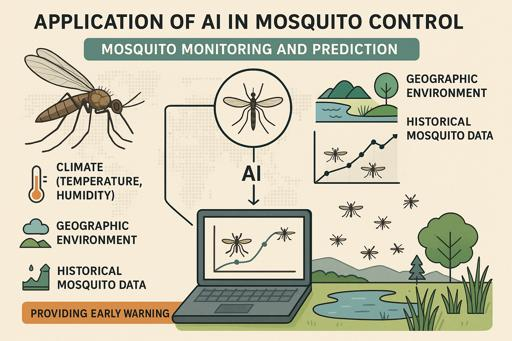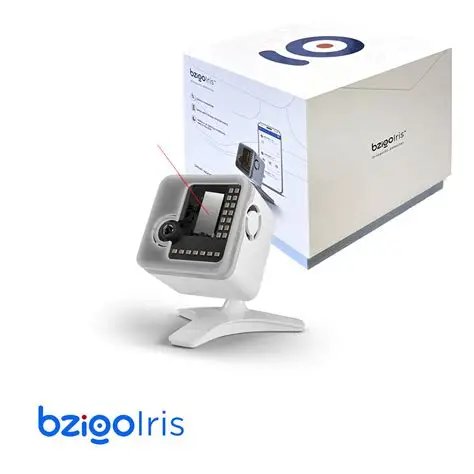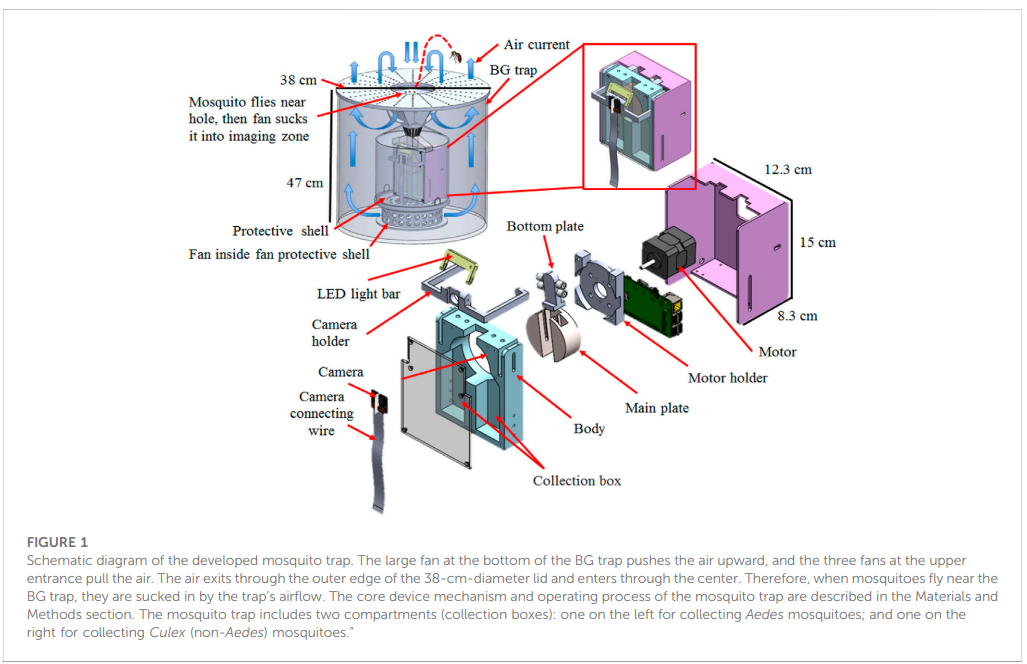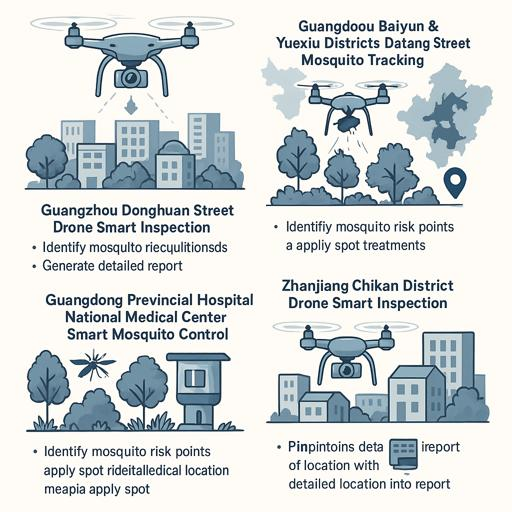
avenger
Revolution with AI-driven technology
Advance application of AI in mosquito control & personal protect

Application AI in mosquito control

Mosquito monitoring and prediction:
AI analyzes climate (temperature, humidity), geographic environment, and historical mosquito data to predict mosquito density and active periods in specific areas, providing early warnings.
AI, as most revolution approach, in mosquito control primarily works by accurately predicting mosquito activity and optimizing intervention methods, shifting the focus from “passive repelling” to “proactive prevention.”
By improving efficiency, accuracy, and enabling real-time decision-making, AI significantly enhances the effectiveness of mosquito-borne disease prevention and control.

Optimizing mosquito control strategies:
AI assists public health authorities by analyzing the distribution of mosquito breeding sites to guide field teams for disease outbreaks monitoring, and targeted interventions supporting, to reduce inefficient operations.

GeoAI Mosquito Risk Forecast System:
Developed by Lingnan University, this system integrates Geographic Information Systems and AI. By collecting data via smart mosquito-repellent lamps and meteorological stations, it analyzes mosquito outbreaks in real time and predicts trends for the next three days. It generates risk indices and maps, helping property managers deploy targeted mosquito control strategies.

Photon Matrix:
The world’s first portable mosquito defense system, using laser radar and AI algorithms to detect mosquito position, distance, and movement direction within 3 milliseconds. Once locked onto a target, it eliminates mosquitoes with lasers, killing up to 30 per second. Its intelligent obstacle avoidance ensures safety for humans and pets. Ideal for camping and farms
Application AI in personal protect
AI-driven smart mosquito-control devices are diverse, providing more efficient and eco-friendly solutions through precise recognition and physical elimination.

Iris Smart Mosquito Device: Designed by Israeli startup Bzigo, Iris uses wide-angle cameras and computer vision to scan rooms around the clock. It marks mosquitoes’ resting spots with a Class 1 (eye-safe) red laser and notifies users via a mobile app. Users can then use an extendable electric swatter to eliminate mosquitoes—safe and environmentally friendly, suitable for families.

An IoT-based smart mosquito trap system embedded with real-time mosquito image processing by neural networks for mosquito surveillance. Front. Bioeng. Biotechnol., 20 January 2023
Smart AI Photonic Mosquito-Killing Lamp: Utilizes AI photonic technology to automatically adjust light intensity and attract mosquitoes, then kills them via electric shock. Features automatic sleep mode when no mosquito activity is detected, scheduled shutdown, and remote control via mobile app for easy management.
Application AI in water-based mosquito control

Real success cases in Guangdong, China
The application of AI in water-based mosquito control is intelligent monitoring of mosquito breeding sites and precise regulation of water environments to reduce mosquito reproduction at the source, replacing traditional large-scale blanket eradication methods.
Intelligent Identification and Monitoring
AI uses cameras or sensors to automatically detect mosquito eggs and larvae (wrigglers) in stagnant water (such as ponds, drains, and water-filled flowerpots), locating breeding sites in real time without manual inspection of each site. This makes the process dozens of times more efficient.
Precise Intervention and Management
Based on identification data, AI controls treatment equipment (such as automatic drug dispensers and water circulation systems) to deliver larvicides or adjust water levels and flow rates exactly where larvae are present. This avoids indiscriminate chemical use and environmental pollution, while also reducing treatment costs.
AI-Powered Mosquito Larvae Detection
- An automated deep learning solution was developed to identify Aedes larvae from microscopic images. Using a convolutional neural network (ResNet-50) trained on 1,500 diverse water source images, the system performs two tasks with high precision: detecting larvae (92.85% accuracy) and classifying them as Aedes-positive or negative (94.19% accuracy). The entire process takes under one second on standard hardware.
- This enables a shift from reactive to proactive control. Applications include real-time surveillance of water containers with low-cost cameras and rapid community-wide audits to identify breeding hotspots. Combining advanced AI with inexpensive hardware makes this a powerful, accessible public health tool for vulnerable communities, revolutionizing mosquito-borne disease prevention.
Reference
Antonio Arista-Jalife, Mariko Nakano, Zaira Garcia-Nonoal, Daniel Robles-Camarillo, Hector Perez-Meana, Heriberto Antonio Arista-Viveros, Aedes mosquito detection in its larval stage using deep neural networks, Knowledge-Based Systems, Volume 189, 2020, 104841, ISSN 0950-7051, https://doi.org/10.1016/j.knosys.2019.07.012.
Machine-Learning Model for Predicting Mosquito-Breeding and Population Connectivity

- This machine-learning framework predicts Aedes aegypti breeding sites and population connectivity by integrating genetic data with environmental and human-landscape variables.
- Key advancements include using the Cavalli-Sforza–Edwards distance, a superior genetic metric, which helped the model achieve a high correlation (R=0.83) between predicted and observed genetic connectivity. The approach was also successfully applied to forecast breeding risk.
- The model generates predictive risk maps identifying high-probability breeding hotspots and key drivers of mosquito gene flow. This enables public health agencies to move from reactive to proactive control, strategically prioritizing areas for larvicide deployment and clean-up operations before outbreaks can emerge.
Reference
E. Pless, N.P. Saarman, J.R. Powell, A. Caccone, & G. Amatulli, A machine-learning approach to map landscape connectivity in Aedes aegypti with genetic and environmental data, Proc. Natl. Acad. Sci. U.S.A. 118 (9) e2003201118, https://doi.org/10.1073/pnas.2003201118 (2021).